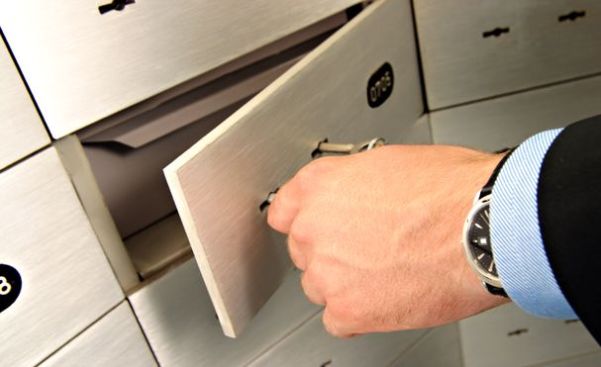
Locker insurance can be highly valuable; here’s what you should know
While banks have safety measures in place, insurance will make it all the more secure; here are some tips to select a good product

There is something comforting about a bank locker. It’s a steel vault in a well-guarded room that requires two humans — you and a bank staffer — to open. Most of us assume that once our jewels and other valuables are deposited in a locker, we can stop worrying about their safety.
However, locker thefts/losses do happen. When they do, recovery becomes quite difficult. The customer blames the bank for it while the bank points out it has no knowledge of the contents of the locker, and bears no responsibility for them.
To address some of these concerns, the Reserve Bank of India (RBI) has introduced some guidelines that have been in effect since the start of this year. These shift to the bank at least a part of the responsibility for the safety of your valuables.
Insurance options
To truly be at ease about the safety of your valuables, you may want to consider locker insurance. In India, locker insurance is mostly offered by general insurance firms as part of their home insurance or content insurance policies. Some of these cover your jewellery under a packaged product, wherein the pieces are covered wherever they may be — on you, in transit, at home, or in a bank locker.
IFFCO Tokio General Insurance offers a standalone bank locker policy, under which jewellery and other valuables are covered from various risks. These include any burglaries or hold-ups and ‘infidelity’ of bank staff, apart from fire, earthquake and other natural or manmade disasters. The product offers extended cover for important documents such as share certificates and passports. A self-declaration up to a specified amount, and the premium, are all you need to purchase the plan.
Most financial advisors would recommend an all-risk jewellery cover rather than a standalone locker cover, as the probability of losing jewels in a bank locker is quite low, though not zero. On the other hand, an all-risk cover would ensure your jewellery is safe anywhere. What does work in favour of a standalone policy is the low cost. You may consider it if you tend to worry about your jewels lying in a locker, out of your sight.
Remember that if a locker theft does happen and you file a claim, the insurer will go by the first information report (FIR) filed by the bank, since it owns the locker. This could make the wait for the recovery longer.
What the RBI has stipulated
To address customer concerns on the safety of their valuables, the RBI has introduced some measures, and these have just kicked in. The most pertinent one is that if locker contents are lost due to fraud by its employees or a general theft, the bank cannot disown liability for it. Its liability for the loss is 100 times the prevailing annual locker rent. So, if you’re paying an annual rent of ₹5,000, the bank’s liability towards the locker stands at ₹5 lakh.
Some of the other rules the RBI has brought in are:
- In case the loss of valuables is due to natural calamities or customer negligence, the bank would not be liable for it.
- The bank where you hold the locker cannot sell locker insurance to you — this is to prevent mis-selling.
- These rules are in effect from January 1, 2022, and applicable to new locker account holders. If you are an existing account holder but wish to be eligible for the new mechanism, you will need to sign a fresh locker agreement with the bank. The bank is allowed to renew its locker agreements with existing customers by January 1, 2023.
- Your bank is required to send you an email and SMS alert every time your locker is opened. This will alert you if you have not authorised the operation.
- The process of new locker allotment is now more transparent, with banks having to declare their inventory on public domain. This is to ensure applicants for new lockers do not beat the queue.
- The bank has to ensure tight security around the locker room. It needs to be under CCTV surveillance, and the recording has to be preserved for at least 180 days. If there is a customer complaint regarding his/her locker, the CCTV footage has to be preserved till the dispute is resolved.
Make it all the more safe
As the owner of valuables, you can take some measures to keep them extra safe. For starters, keep a meticulous record of your jewellery, documents and other valuable items, and where you have stored each. If you bring a piece of jewellery home from the locker, make a note of it.
If you fail to pay your locker rent for three years in a row, the bank can use its discretion to break open the locker. To avoid this, pay the rent on time. You can also give a standing instruction. Access your locker at regular intervals — at least once a year. This way, you can keep an eye on your valuables, and the bank can inform you about non-payment of rent, etc.
The bank’s liability for your locker contents is 100 times your annual rent. So, it may be a good idea to keep valuables worth up to that amount in that locker. If you own a lot of jewellery, you can consider splitting it across two or more lockers, or even buy a safe and keep some of it at home.
A good insurance policy would take care of several of your concerns. At the end of the day, you need to know your valuables are in a safe place, ready to be used or monetised as the need arises.


